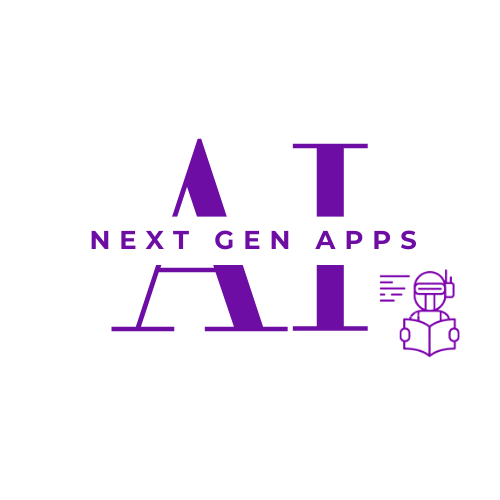ColPali is a new architecture for document retrieval that leverages the power of Vision Language Models (VLMs) to process and understand documents directly from their images. This approach stands in contrast to traditional document retrieval systems, which typically rely on Optical Character Recognition (OCR) to extract text before analysis. OCR can miss important visual information such as layout, images, and fonts.

Table of Contents
ToggleHow It Works
- Image Embedding: The system first processes the document image by dividing it into small patches. A vision model then generates an embedding for each patch, capturing its visual features.
- Contextualization: These patch embeddings are fed into a transformer-based model, which takes into account the relationships between the patches and injects contextual information. This allows ColPali to understand the overall layout and meaning of the document.
- Late Interaction Matching: Finally, ColPali uses a late interaction mechanism to match the document embedding with the query embedding. This matching process considers the query and document embeddings together, enabling more accurate retrieval, especially for documents rich in visual content.
Advantages of ColPali
- Leverages visual information: ColPali can exploit both textual and visual cues within documents, leading to more comprehensive retrieval compared to traditional text-based methods.
- Faster and more efficient: By directly processing images, ColPali bypasses the need for OCR and other pre-processing steps, making it faster and more efficient.
- End-to-end trainable: The entire ColPali system can be trained jointly, optimizing the retrieval process for better performance.

Limitations of ColPali
- Reliance on VLMs: ColPali’s effectiveness hinges on the capabilities of the underlying VLM. The accuracy of document retrieval is dependent on the VLM’s ability to understand and encode visual information.
- Limited adoption: ColPali is a relatively new approach, and its adoption in real-world applications is still evolving. Further research and development are needed to refine the technique and broaden its applicability.
- Computational cost: Training and running VLMs can be computationally expensive, which may pose challenges for large-scale deployments.
Use Cases for ColPali
Its ability to efficiently retrieve documents based on both textual and visual content, has a wide range of potential applications across various industries. Here are some potential use cases:
Academic and Research
- Efficient Literature Search: Researchers can use ColPali to find relevant papers based on both the paper’s title, abstract, and visual content (like graphs, diagrams, or images). This can significantly improve the efficiency of literature review processes.
- Image-Based Research: Scientists working with image-heavy datasets, such as biology, astronomy, or medicine, can leverage ColPali to find relevant papers or datasets based on specific visual patterns or objects.
Enterprise and Business
- Enhanced Document Management: Companies can use ColPali to improve their document management systems by enabling efficient search based on both text and images within documents. This can be particularly useful for industries like law, finance, and engineering where documents often contain visual elements.
- Product Search: E-commerce platforms can benefit from ColPali by allowing users to search for products based on images. For example, a user could upload a photo of a product they like and ColPali would find similar products.
- Market Research: Market research firms can use ColPali to analyze visual trends in marketing materials, social media, or product packaging.

Media and Entertainment
- Image-Based News Search: News organizations can use ColPali to enable users to search for news articles based on images, such as photos or videos. This can be particularly useful for breaking news events or identifying the source of an image.
- Video Content Analysis: Video platforms can use ColPali to analyze video content and retrieve relevant clips based on visual content, making it easier for users to find specific scenes or moments.
Government and Public Sector
- Public Record Search: Government agencies can use ColPali to improve the search functionality of public records, allowing citizens to find relevant documents based on both text and image content.
- Disaster Response: In emergency situations, ColPali can be used to analyze images and videos from the affected area to identify specific needs and allocate resources efficiently.
Education
- Educational Resource Search: Teachers and students can use ColPali to search for educational resources based on both text and visual content, such as diagrams, graphs, or images.
- Image-Based Learning: ColPali can be used to create interactive learning experiences where students can learn by exploring images and related text content.
It’s important to note that these are just a few examples, and the potential applications of ColPali are vast and diverse. As the technology continues to develop, we can expect to see even more innovative use cases emerge.

Conclusion
Overall, ColPali represents a promising advancement in document retrieval by incorporating visual information into the process. This approach has the potential to significantly improve the accuracy and efficiency of document retrieval tasks, particularly for documents that are rich in visual content.
ColPali’s ability to harness the power of vision and language models for document retrieval opens up a world of possibilities across industries. From revolutionizing academic research to enhancing e-commerce experiences, the potential applications of ColPali are vast and far-reaching. As the technology matures, we can anticipate even more innovative and impactful use cases emerging, transforming the way we interact with and retrieve information from documents.
FAQs (Frequently Asked Questions)
ColPali is a cutting-edge document retrieval system that leverages the power of Vision Language Models (VLMs) to process and understand documents directly from their images. Unlike traditional methods that rely on OCR, ColPali can effectively utilize both textual and visual information within documents for more accurate and efficient retrieval.
ColPali operates in three main stages:
- Image Embedding: The document image is divided into patches, and each patch is assigned an embedding representing its visual features.
- Contextualization: A transformer-based model processes the patch embeddings, capturing the relationships between them and incorporating contextual information.
- Late Interaction Matching: The document embedding is matched with the query embedding using a late interaction mechanism, allowing for more precise retrieval based on both text and visual content.
ColPali offers several advantages:
- Leverages visual information: It can utilize both textual and visual cues for improved retrieval accuracy.
- Faster and more efficient: By eliminating the need for OCR, ColPali is significantly faster and more efficient.
- End-to-end trainable: The entire system can be optimized for better performance.
While ColPali is a promising technology, it also has some limitations:
- Reliance on VLMs: Its performance depends on the capabilities of the underlying VLM.
- Computational cost: Training and running VLMs can be computationally expensive.
- Limited adoption: As a relatively new approach, its widespread adoption is still in its early stages.
ColPali has a wide range of applications across various industries, including:
- Academic and research: Efficient literature search, image-based research
- Enterprise and business: Enhanced document management, product search, market research
- Media and entertainment: Image-based news search, video content analysis
- Government and public sector: Public record search, disaster response
- Education: Educational resource search, image-based learning
